Good Apples spotlights people and organizations improving education in the developing world.
 1. How long have you been working in education? What made you start?
1. How long have you been working in education? What made you start?
One of my earliest memories as a young girl was following my mother to work to watch her teach English as a Second Language to Hmong refugees from Laos. When she taught her students, I saw that she not only infused people with energy and laughs, but also empowered them with the confidence to speak and communicate with an environment they were adjusting to.
In high school, I began to volunteer as an English tutor for Mexican immigrant children living in my Midwestern American hometown. I followed up these experiences by teaching English in southern India at a rural junior college as part of my undergraduate anthropology department’s social outreach program. From 2009 to 2011, I lived, worked and did research in Phnom Penh, Cambodia, where teaching comprised one of the primary activities to which I devoted myself. Working with the UN High Commissioner for Refugees, I instructed Cambodia’s Immigration and Refugee Department not only in English, but also about the cultural backgrounds of asylum seekers coming to Cambodia. I worked with a large group of Montagnard refugees who were living in Phnom Penh. I taught them English, basic computer literacy, and drawing. At another organization, Cambodian Living Arts, I coordinated the organization’s first independent English language program and also developed a curriculum for training arts students to become English-speaking tour guides.
2. Where are you working now? What are you doing to make education in the developing world better?
I currently work at the YWCA Multicultural Center in Tulsa, Oklahoma. The YWCA has a long history of working with immigrants and refugees by providing opportunities to connect with social services that aid populations in attaining self-sufficiency– including ESL classes, child care, and job development. I coordinate all language programs for both immigrants and refugees. Our classes geared towards Tulsa’s diverse immigrant population range from beginner classes that place focus on workplace vocabulary all the way to classes aimed specifically at preparing immigrants for obtaining naturalization and passing the US citizenship test.
In order to best serve our refugee clients who are predominantly ethnic Zomi-Chin refugees from Myanmar (Burma), the YWCA also offers ESL instruction at the beginning levels in order to empower this refugee group to find employment and adapt to the local community as quickly as possible. The linguistic and cultural barriers that these refugees first face when arriving to the US can be greatly reduced if refugees have access to language learning opportunities.
 3. What does your typical day look like?
3. What does your typical day look like?
Each day, I divide my time between classes that are geared for our immigrant communities and those classes provided to the Zomi-Chin refugees. I interview instructors and volunteers, give them orientations, shadow classes, assist in lesson and syllabus preparation, order class materials, and coordinate all aspects of the classroom experience. For our Zomi-Chin refugee community, setting up class schedules can be somewhat of a logistical challenge since these refugees are beginning to work intensive, 12-hour daily shifts. Thus, we are trying to provide both daytime and evening class options. Due to this refugee community’s immediate need to gain self-sufficiency and learn about their new American communities, our English language programs put heavy emphasis on workplace and vocational vocabulary.
In order to serve our diverse immigrant communities here in Tulsa, we offer a wide array of classes. For beginners, we have Levels One and Two which put emphasis on workplace vocabulary. For those immigrants with high levels of English proficiency and who are seeking to become American citizens, we also offer two special English classes that help provide the English necessary to be able to apply for naturalization and navigate the oral and written American citizenship exams.
ESL Civics is a class that introduces basic vocabulary touching on US history, politics, and popular culture while allowing students to practice their interview skills. The Citizenship class reviews all of the 100 questions that can potentially be asked during the naturalization exam, as well as providing students with dictation and speaking practice.
4. What’s the biggest challenge you’ve faced working in development?
The biggest challenges that I’ve faced when working with any development scheme—particularly educational projects—is the combination of a lack of funding, lack of time to properly train employees/volunteers, and an overabundance of people needing or wanting to be served. I’ve discovered that development projects that operate as charities and rely solely on funding from grants are ultimately unsustainable and ultimately force many people in need to learn to depend on handouts rather than using opportunities or resources to allow them to become self-sufficient.
5. What’s the biggest challenge the education programs you’ve worked with have faced?
I feel that in any classroom, the fact that students come from such different levels and educational experiences can make teaching exceptionally difficult, especially when resources are limited for trying to bring in other teachers or resources.
6. What’s been your favorite success story?
My greatest sense of fulfillment in working in the classroom came when I was overseeing and instructing Montagnard refugees living in a camp in Phnom Penh, Cambodia. English, computer, and art classes were their only sources of learning and enjoyment during the time when they were living in Cambodia and waiting to be resettled to the US. Despite the fact that the kids were all from completely different levels of English language proficiency, and even literacy levels, every single student appeared dedicated to learning as much as they could from each lesson. I was astounded at the amount of creativity and individualism that students showed both in their written compositions as well as through drawings and other artwork. The Montagnard student group awed me with their ability to draw and reflect on their experiences as refugees without letting it define or confine their future possibilities.
7. What’s your advice to those just beginning a career working in education in the developing world?
The only way that you’ll know if you enjoy doing something is to give it a try! For those of us coming from more developed nations, it is important to be able to see firsthand what the differences are between classrooms in developing countries versus those in our own backyards. Further, it is important to understand how your own expectations, behaviors, and actions must also change to accommodate the radically new contexts that you’ll be working in. One of the most important lessons that I have learned while working in the developing world is to leave my assumptions behind when starting a project and focus instead on listening, watching, and learning from the people and context around me. Only after I’ve done my share of researching, processing, and engaging in dialogue with the local context would I begin to form my own opinions and an action plan for engaging with the project at hand.
8. Write your own question, and answer it!
Q: What was my favorite subject to teach?
A: I deeply enjoyed leading a conversation seminar focused on Culture and Society at a rural Indian junior college in 2007. The class consisted of ongoing discussions and debates that allowed rural South Indian students to explore and articulate their views on societal issues including caste, religion, gender (in)equality, politics, food and popular culture. While students were eager to learn from me about different aspects of US culture, they were incredibly excited to share their own opinions about Indian and Western cultures and why they perceived that there were such great social differences. There were a few bitter arguments between students, but also many, many laughs as students love to use role play to demonstrate situations, ceremonies, and other cultural events.
 If you know any Good Apples working to make education better in the developing world, tell us! contact@openequalfree.org
If you know any Good Apples working to make education better in the developing world, tell us! contact@openequalfree.org
Creative Commons Love: Nina Matthews on flickr.com
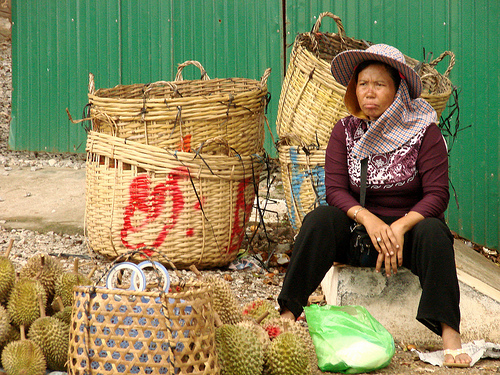 Although small gains have been made, in general Cambodian woman still fall behind their male peers regarding education and positions within the labor market. According to a study conducted by the International Labor Organization (ILO), men make up only 5% more of the 7.4 million-person workforce, however on average they earn approximately $25.00 more per month.
Although small gains have been made, in general Cambodian woman still fall behind their male peers regarding education and positions within the labor market. According to a study conducted by the International Labor Organization (ILO), men make up only 5% more of the 7.4 million-person workforce, however on average they earn approximately $25.00 more per month.
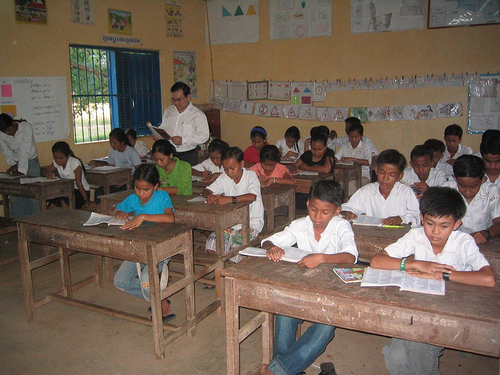
 This September, Open Equal Free provided a study skills training program to
This September, Open Equal Free provided a study skills training program to 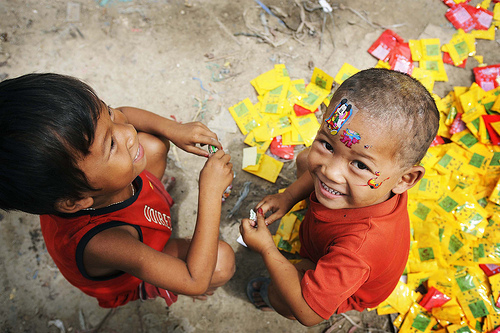
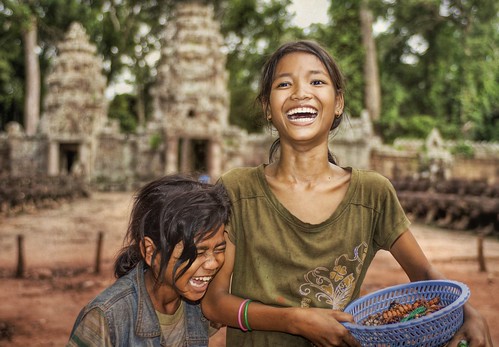
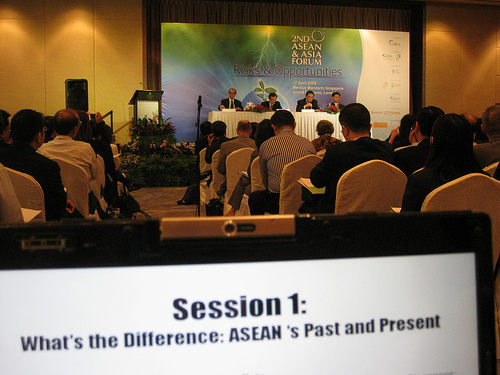

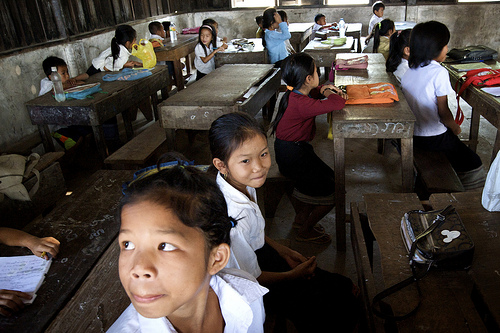
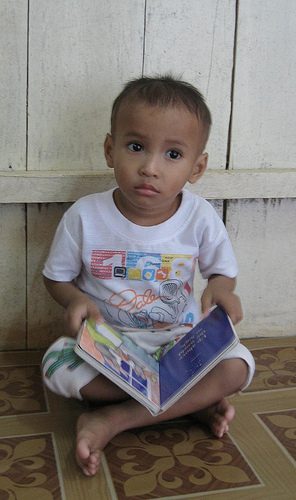
 1. How long have you been working in education? What made you start?
1. How long have you been working in education? What made you start? 3. What does your typical day look like?
3. What does your typical day look like?